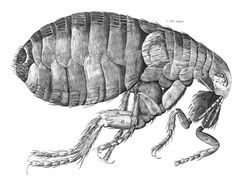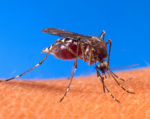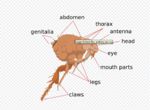Insecta
Jump to navigation
Jump to search
| This article has been peer reviewed but is awaiting expert review. If you would like to help with this, please see more information about expert reviewing. |
Classification
The phylum arthropoda is divided into several subphylums including Chelicerata (which includes the arachnids), Myriapoda, Hexapoda (which includes the insecta), Crustacea and Trilobitomorpha. These are then divided into many classes. The two of major veterinary importance are the insecta and arachnida classes.
Insect Structure and Function
Life cycles
- Most adult female insects are oviparous
- Lay eggs which hatch after deposition
- Some adult female insects are viviparous
- Lay larvae or nymphs
- Eggs rupture in female reproductive tract
Simple Metamorphosis
- Hemimetabolous
- Nymph emerges from the egg which resembles the adult but is sexually immature
- Nymph grows and undergoes several ecdyses (moults)
- Nymph becomes an adult (imago)
- E.g. Lice
Complex Metamorphosis
- Holometabolous
- Larva emerges from the egg and does not resemble the adult
- Larva feeds, grows and undergoes several ecdyses
- Larvae undergoes a quiescent stage where the outer cuticle hardens to form a pupa
- Some species have a silken cocoon
- Adult develops inside the pupal case before emerging
- E.g. Fleas and dipteran flies



